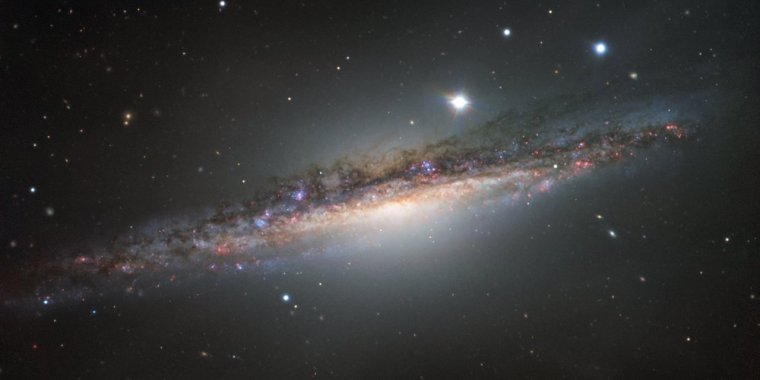| News / Space News |
A Galaxy on the Edge
This colourful stripe of stars, gas, and dust is actually a spiral galaxy named NGC 1055. Captured here by ESO’s Very Large Telescope (VLT), this big galaxy is thought to be up to 15 percent larger in diameter than the Milky Way.
NGC 1055 appears to lack the whirling arms characteristic of a spiral, as it is seen edge-on. However, it displays odd twists in its structure that were probably caused by an interaction with a large neighbouring galaxy.
Spiral galaxies throughout the Universe take on all manner of orientations with respect to Earth. We see some from above (as it were) or “face-on” — a good example of this being the whirlpool-shaped galaxy NGC 1232.
Such orientations reveal a galaxy’s flowing arms and bright core in beautiful detail, but make it difficult to get any sense of a three-dimensional shape.
We see other galaxies, such as NGC 3521, at angles. While these tilted objects begin to reveal the three-dimensional structure within their spiral arms, fully understanding the overall shape of a spiral galaxy requires an edge-on view — such as this one of NGC 1055.
When seen edge-on, it is possible to get an overall view of how stars — both new patches of starbirth and older populations — are distributed throughout a galaxy, and the “heights” of the relatively flat disc and the star-loaded core become easier to measure.
Material stretches away from the blinding brightness of the galactic plane itself, becoming more clearly observable against the darker background of the cosmos.
NGC 1055 is located approximately 55 million light-years away in the constellation of Cetus (The Sea Monster). (ESO)
YOU MAY ALSO LIKE


